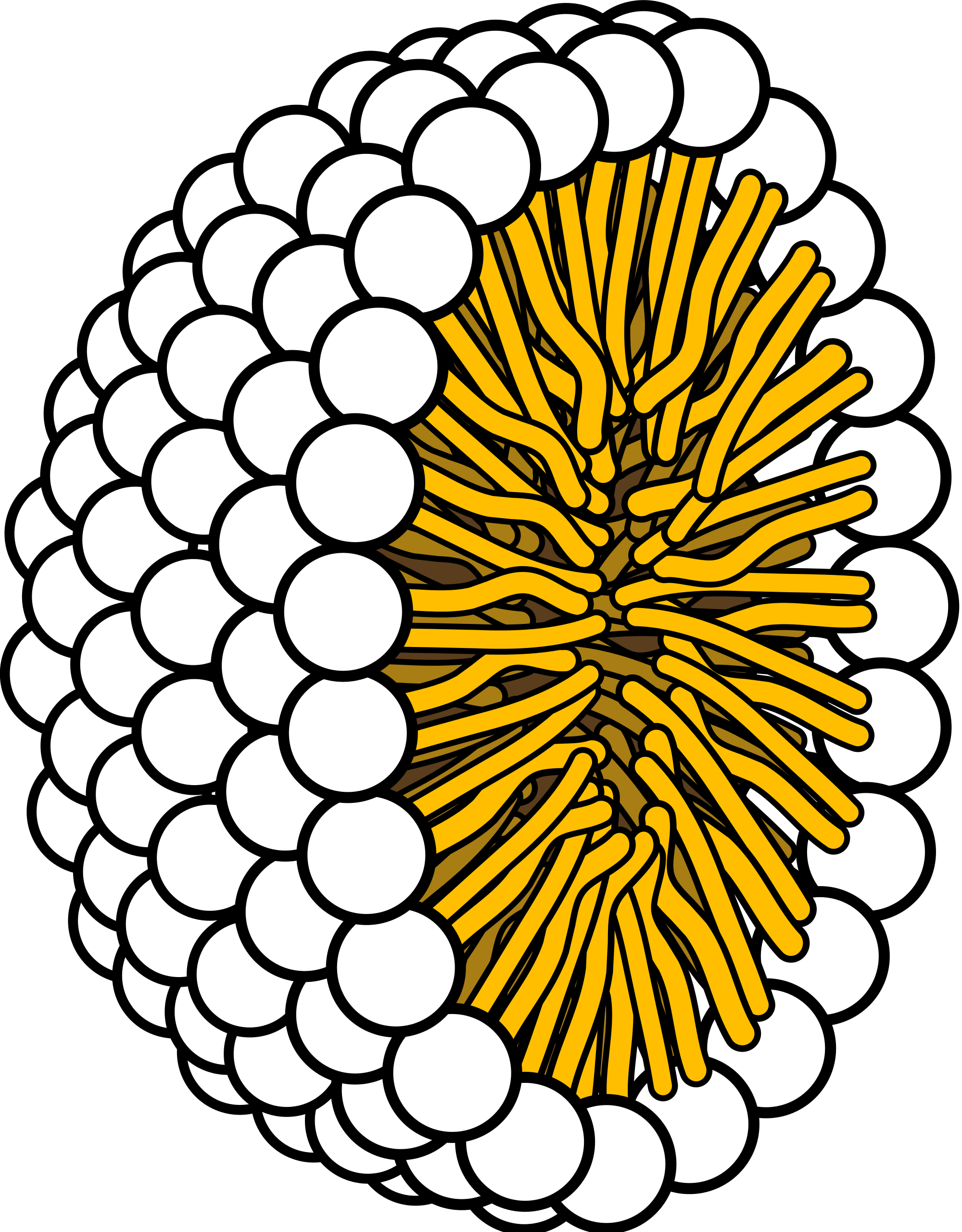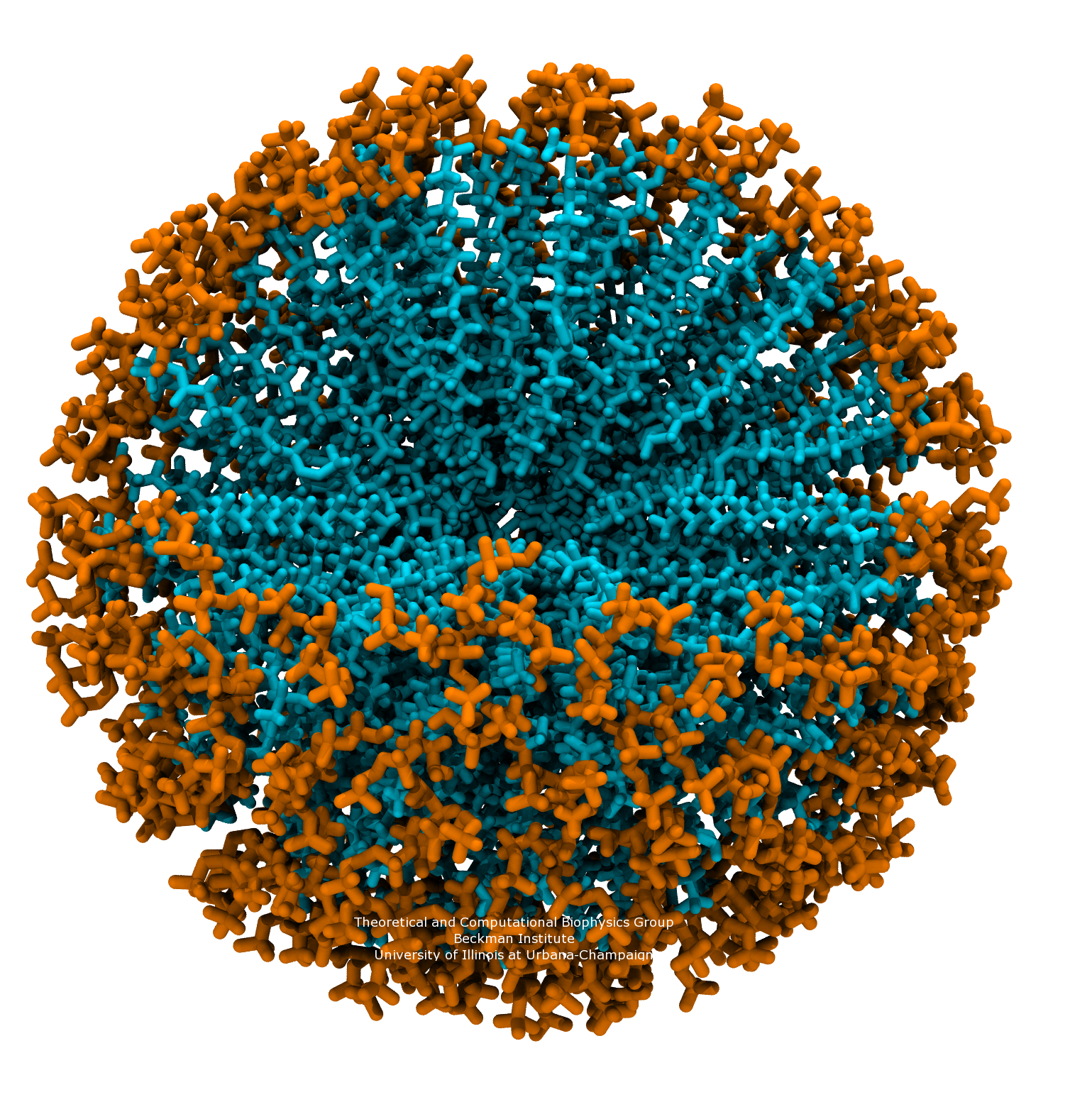Micelle
Micelles (from Latin mica = lumps, small bites ), also called association colloids are aggregates ( associates ) of amphiphilic molecules or surfactants, which (usually water ) assemble spontaneously in a dispersion medium. This process is called self-assembly. Micelles form above a certain concentration, the critical micelle concentration (CMC), due to the tendency of the surfactants to the phase separation. This means that the hydrophilic parts ( heads) of the surfactant molecules align themselves to the adjacent water molecules, whereas the hydrophobic parts ( tails) together overlap and thus form a separate phase ( see chart). Such micelle typically has a size of a few nanometers, eg, from about 4 nm for SDS micelle in water.
Inverse micelles
In organic solvents, there are micelles, only with reversed orientation ( so-called inverse micelles, also called reverse micelles). Furthermore, there are many balls next to other geometric shapes ( rods, plates, etc.) depending on the size and aspect ratio of head to tail.
Reverse micelles find application, for example, in the extraction of proteins from fermentation broths. Here, the protein is dissolved in the inner core of the reverse micelle.
Liquid crystals
If a solution contains very large concentrations of surface-active substances, the many micelles can form higher order states, so-called liquid crystals.
Formation energy
The Mizellbildungsprozess proceeds spontaneously, that is, it is based on a thermodynamic equilibrium. The driving force behind this is the release of water molecules that were previously associated with the surfactant molecules, so that the entropy increases. The heat ( enthalpy) of the micelle can be described as follows:
Further meaning
As micelle formation is also the clumping together of asphaltenes in petroleum products, for example, in fuel oil referred to.










